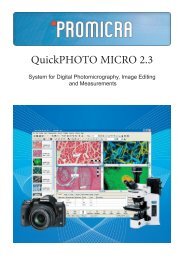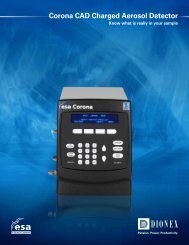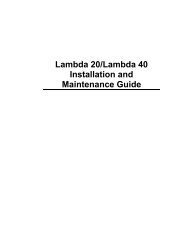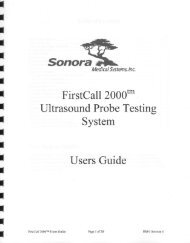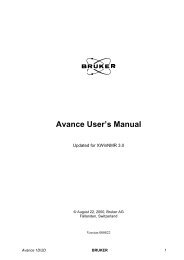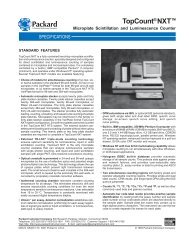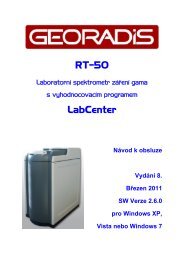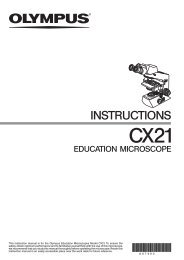HR-33T Dew Point Microvoltmeter Instruction/Service Manual ...
HR-33T Dew Point Microvoltmeter Instruction/Service Manual ...
HR-33T Dew Point Microvoltmeter Instruction/Service Manual ...
You also want an ePaper? Increase the reach of your titles
YUMPU automatically turns print PDFs into web optimized ePapers that Google loves.
SECTION 7 – TROUBLESHOOTINGIf the instrument fails to operate satisfactorily, check the batteries and replace when needed, as outlined in Section6.If the batteries are satisfactory but the instrument does not operate properly, one of the following circumstancesmay be the reason:[a]Leads Improperly Connected to the Binding PostsMake sure that the leads are connected to the binding posts as outlined in Section 2.It may be impossible to tell from inspection of the lead wires which wire is connected to the constantanand which to the chromel wire. To determine if the leads are connected properly, set the RANGE to100. If the lead wires are connected properly, the meter needle should rise from 0 to 30 µvolts (withthe thermocouple in dry air) in about 7 seconds after the FUNCTION switch is rotated to COOL. Themeter will then approach a maximum value asymptotically. When the FUNCTION switch is rotatedto DEW POINT, the needle will gradually rise of fall, depending on the A v setting (Paragraph 2.1, 2c),but will generally not rise more than 10 µvolts. It the leads are reversed, the needle rapidly rises to 20µvolts (2 to 3 seconds). It will continue to rise to and beyond 100 µvolts on COOL and on DEWPOINT.[b]Open ThermocoupleMeasure the thermocouple resistance with an ohmmeter. It the resistance is less than 2 ohms, thethermocouple is probably shorted. If it is greater than 20 ohms, it is probably open or has a badconnection.[c]Loose ConnectionIf the meter can be controlled with the ZERO OFFSET controls when the FUNCTION switch is in theSHORT position but not in the READ position, then the binding posts may be loose from the meter orthe psychrometer leads loose from the binding posts. These should be cleaned and tightened.[d]Wet Measuring JunctionIf the measuring junction is wet, readings will generally be near zero. Wet junctions may occur ifreadings are repeated without waiting for the junction to dry completely (this may require 5 minutesor more at water potentials approaching zero). Wet junctions apparently also persist for long periodsin soil psychrometers, perhaps resulting from temperature gradients. Detection and avoidance of wetjunctions differs with the type of psychrometer and the way in which it is being used.(1) Wescor C-52 Sample Chamber: If a wet junction is suspected, turn the FUNCTION switch toREAD and observe the meter needle while the chamber is opened and the sample pulled partwayout to allow dry air to enter the chamber. If the junction is wet, the needle will quickly rise tohigh readings and after several seconds drop to zero. The time is dependent upon the quantity ofwater condensed on the junction. The chamber is then closed and, after a short vapor andequilibration time, is ready for another reading. If the junction is dry, the reading drops to zerowithin one or two seconds after transient excursions associated with pressure changes on openingthe chamber.(2) In-situ Soil Psychrometer: If condensation is suspected, turn the FUNCTION switch to HEAT toevaporate all water. This may take 10 seconds or more. Switch to READ and allow 5 minutesfor thermal and vapor equilibration, then make a reading. One problem associated with use of theHEAT function is that water evaporated from the junction will condense on the nearest surface,i.e., the thermocouple mount, rather than in the soil, possibly leading to erroneous readings.31




